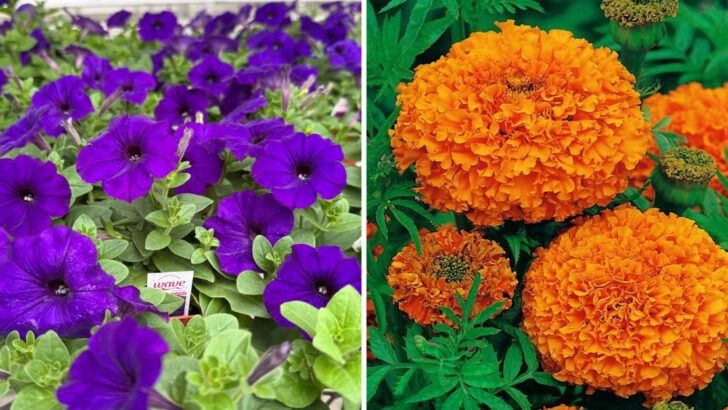There’s something satisfying about a container full of color on a sunny day, especially when it’s packed with flowers that don’t hold back. Annuals are the go-to choice for summer pots because they know how to put on a show. Bold, bright, and full of personality, these plants are all about impact from the moment they’re planted to the end of the season.
The best part? You can get creative every year. Mix colors, play with textures, try something new, annuals give you that freedom. This list features 20 standout options that thrive in containers and bring serious energy to patios, balconies, and doorsteps. If your pots have been looking a little too tame, these picks might be just what they need.
Petunia
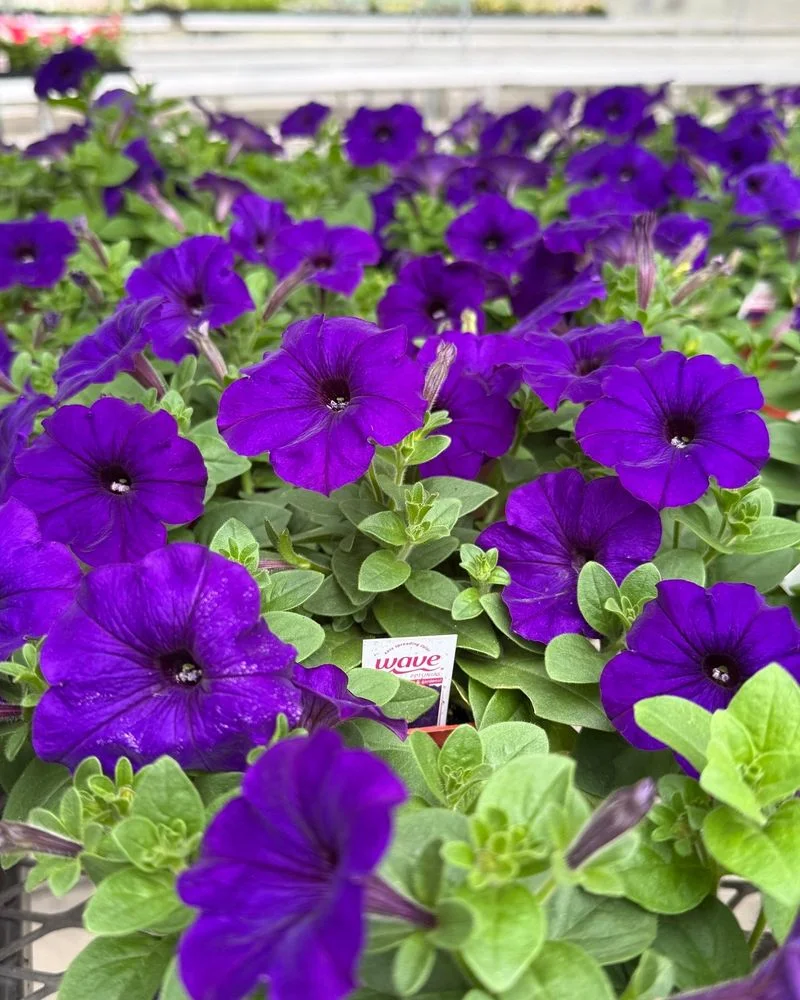
Petunias are the quintessential summer flower, known for their vibrant colors and delicate trumpet-shaped blooms. These hardy plants thrive in sunlight, making them perfect for brightening up any summer pot.
Their cascading growth habit allows them to spill beautifully over the edges, creating a lush and full appearance. Petunias come in a wide array of colors, from deep purples and pinks to pure whites.
Did you know? Petunias were originally discovered in South America and have been hybridized to offer an even greater diversity of colors and patterns.
Marigold
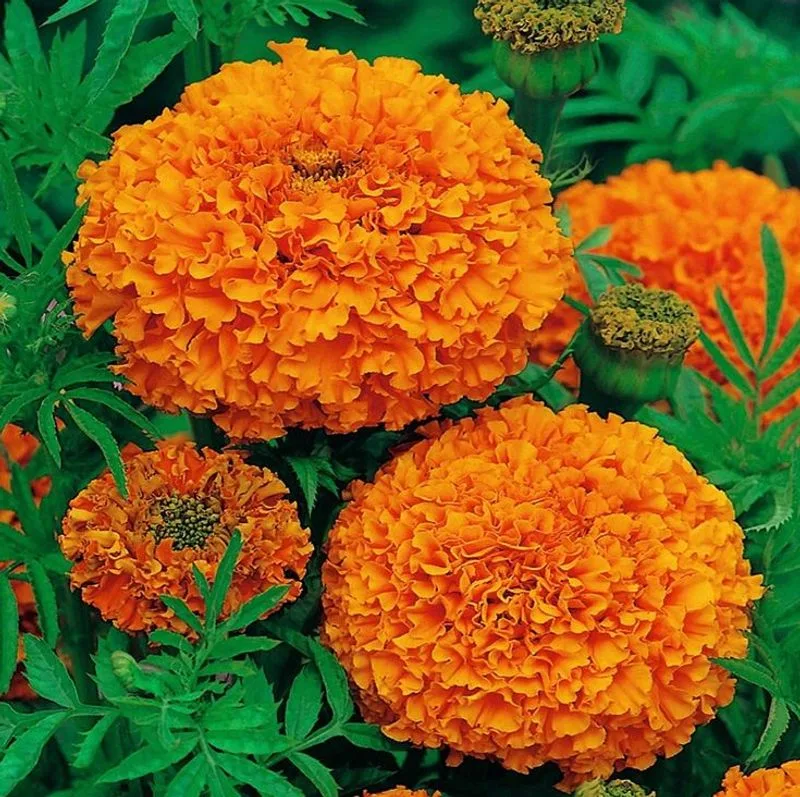
Marigolds are a gardener’s favorite not just for their striking colors but for their resilience. The bold oranges and yellows of marigolds can illuminate any garden space.
Their pungent scent is known to deter pests, making them not only beautiful but practical. These sun-loving plants bloom abundantly throughout the summer.
Interestingly, marigolds have been used in traditional medicine and as natural dyes for centuries, showcasing their versatility beyond the garden.
Zinnia
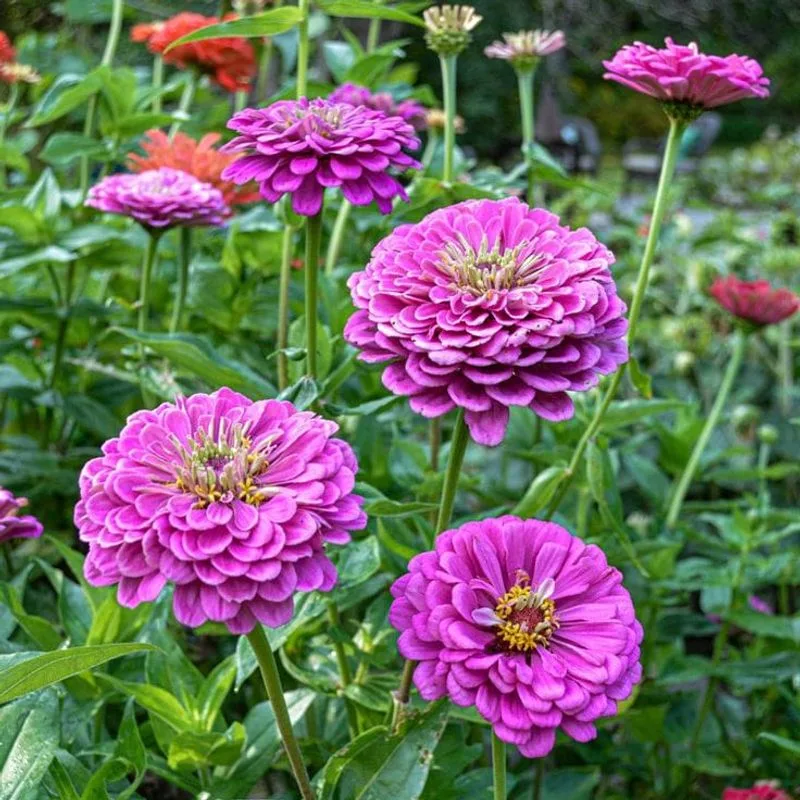
Zinnias are known for their brilliant display of color, ranging from soft pastels to striking reds and yellows. These cheerful flowers are easy to grow and flourish in hot climates.
Zinnias attract butterflies, adding an extra layer of life and movement to your garden. With their long stems, they are also perfect for cutting, making them a dual-purpose plant for pots and bouquets.
In the language of flowers, zinnias symbolize lasting friendship, making them a meaningful addition to your summer display.
Begonia
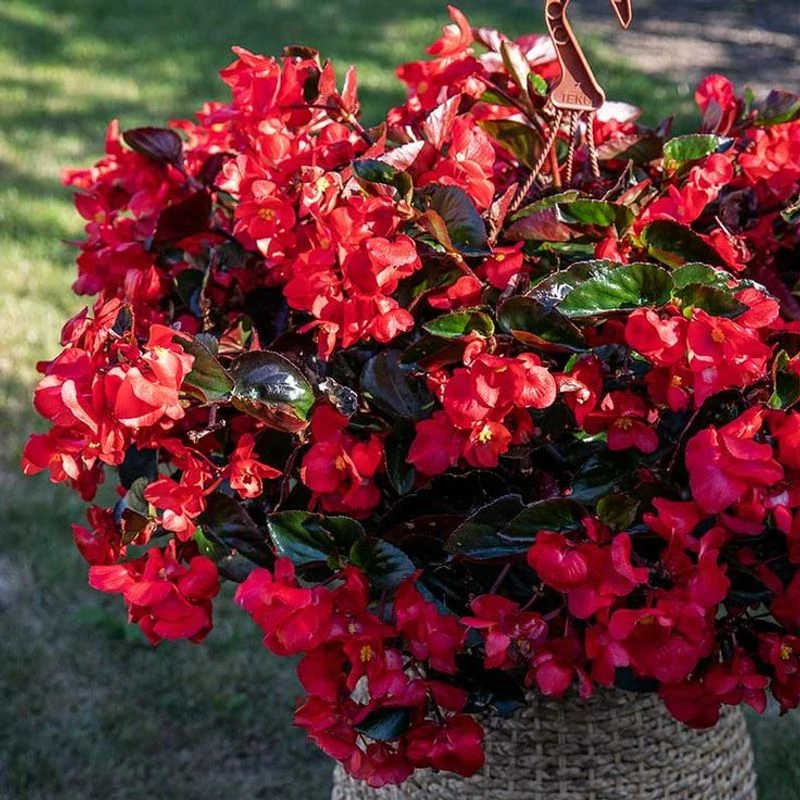
Begonias are adored for their unique foliage and vivid blooms that range from red to pinks and yellows. These versatile plants thrive in both sun and shade.
With their waxy leaves and vibrant flowers, begonias add texture and color, making them ideal for pots and hanging baskets. They require regular watering but reward you with continuous blooms.
Fascinatingly, begonias were named after Michel Begon, a French politician and plant enthusiast, highlighting their long-standing appeal.
Impatiens

Impatiens are excellent for shady spots, offering a splash of color where many other plants might struggle. Their name reflects their impatient seed dispersal method.
These flowers range in colors from bright pinks to deep purples and whites. Impatiens are easy to care for, requiring moist soil and a little shade to flourish.
Did you know? Impatiens are nicknamed “busy Lizzies” in the UK, a nod to their prolific blooming nature, ensuring your pots remain lively all summer long.
Geranium
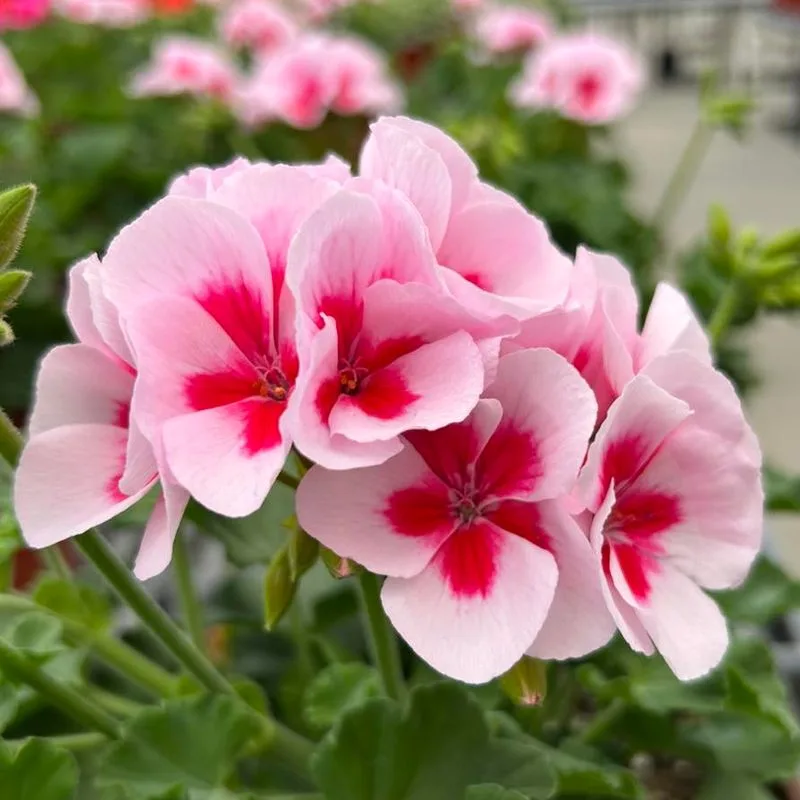
Geraniums bring a classic touch to summer pots with their rich reds, pinks, and whites. Known for their distinct scalloped leaves, they add a touch of elegance.
These hardy plants are both sun-loving and drought-tolerant, making them easy to care for. Their fragrant leaves also offer a pleasant aroma.
Interestingly, geraniums were used by the Victorians as a natural air freshener, reflecting their timeless appeal and functionality in home gardens.
Cosmos
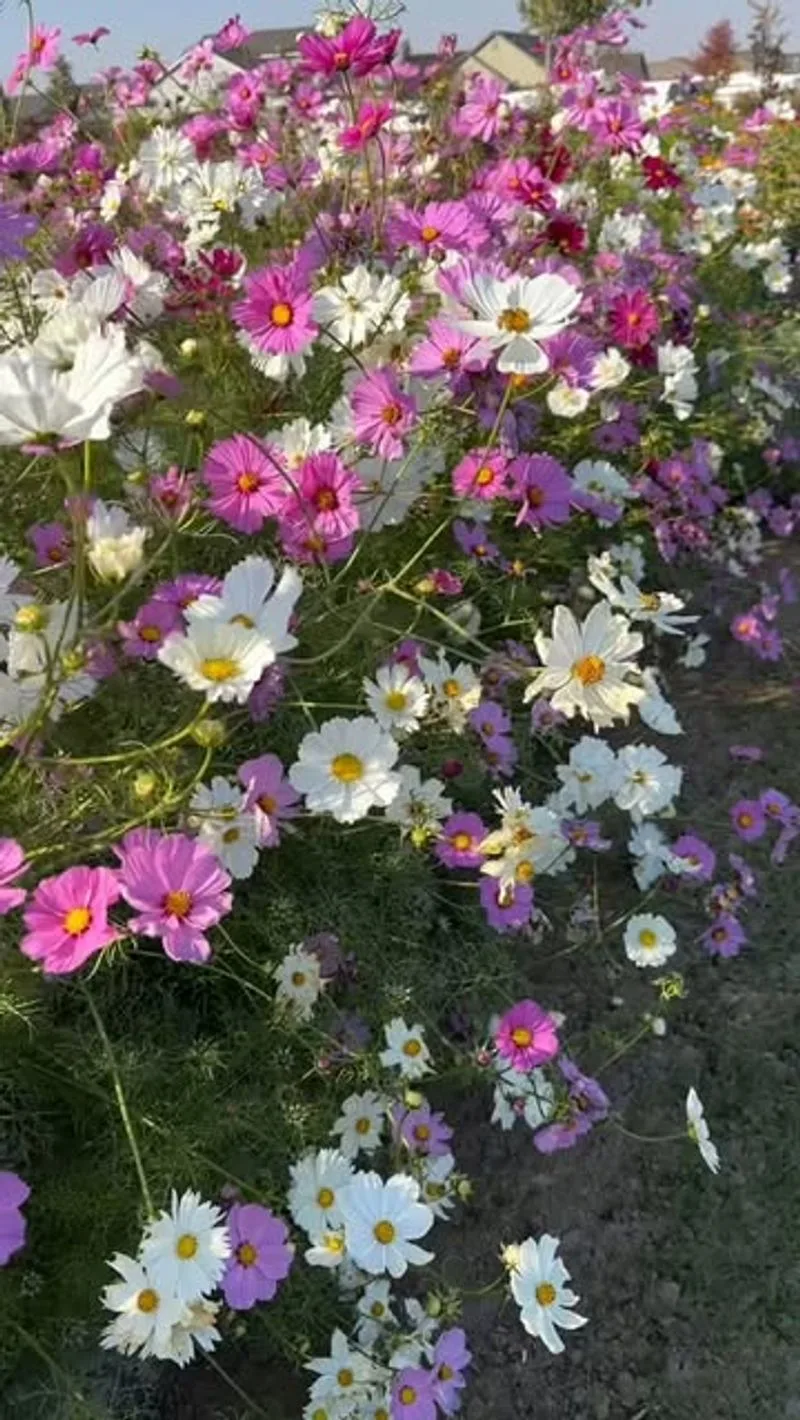
Cosmos flowers are the epitome of simplicity and grace, with feathery foliage and daisy-like blooms. These flowers thrive in sunny conditions and can grow quite tall.
They attract pollinators like bees and butterflies, adding ecological value to your garden. Cosmos are drought-tolerant, making them low-maintenance yet high-impact choices for pots.
Fun fact: Cosmos are native to Mexico and were brought to Europe by Spanish explorers, spreading their charm worldwide.
Nasturtium
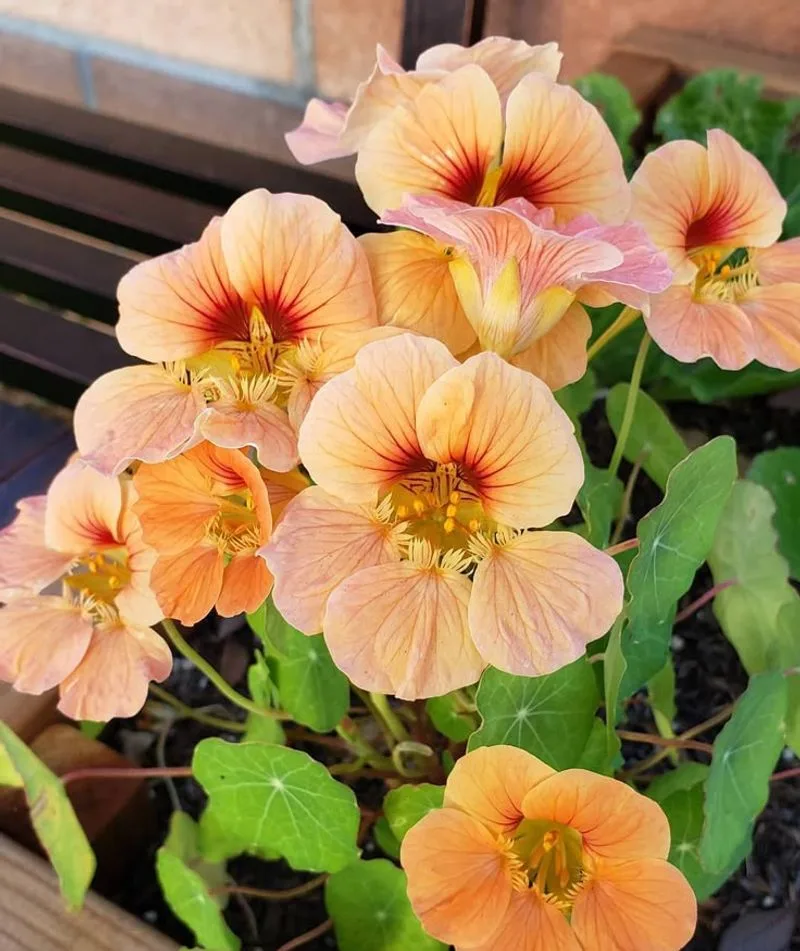
Nasturtiums are known for their peppery leaves and vibrant blooms, adding both color and an edible element to gardens. Their flowers range from yellows to deep reds.
These plants prefer full sun and well-drained soil, and they grow well in poor soils, making them versatile additions to pots. Nasturtiums can attract beneficial insects like aphid-eating hoverflies.
Interestingly, nasturtium leaves and flowers are edible and often used in salads, providing a spicy kick and visual appeal.
Snapdragon

Snapdragons are playful flowers, loved for their unique blooms that resemble tiny dragon faces. They come in a variety of colors, which makes them versatile for any garden design.
These flowers thrive in cooler temperatures, blooming profusely in spring and fall. Snapdragons are known to attract bees, ensuring your garden is buzzing with life.
Fun fact: The name ‘snapdragon’ comes from the flower’s shape, which, when squeezed, opens and closes like a dragon’s mouth.
Calibrachoa
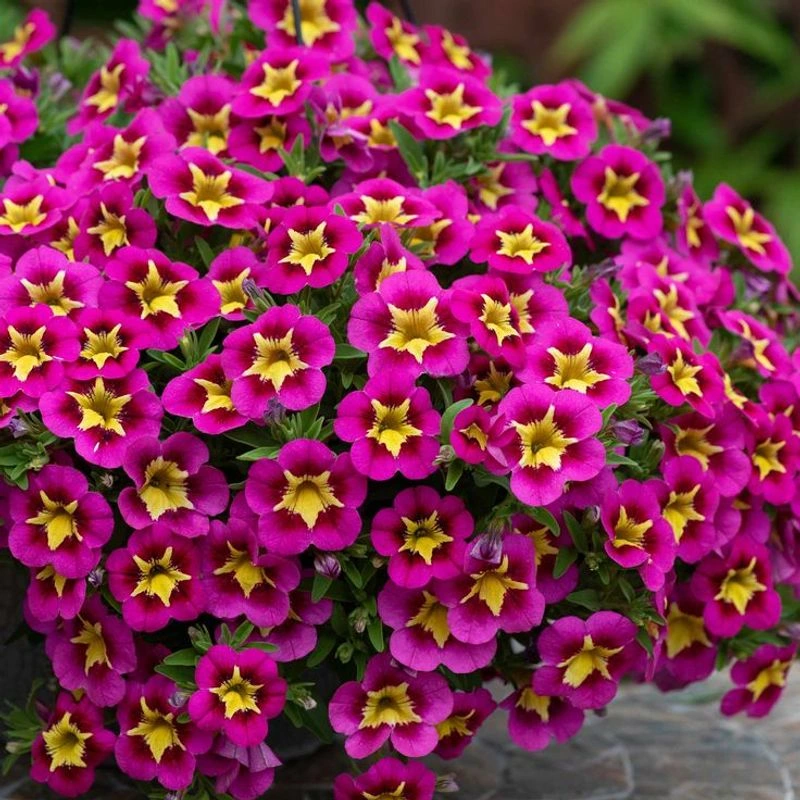
Calibrachoa, often called “Million Bells,” is perfect for adding a profusion of color to hanging baskets and containers. Their small, petunia-like blooms are abundant and come in a dazzling array of colors.
They are low-maintenance, requiring full sun and regular watering to flourish. Calibrachoas’ trailing habit makes them ideal for spilling over the edges of containers.
Interestingly, these plants are a relatively new addition to gardens, first cultivated in the 1990s, and have since become garden favorites for their versatility.
Alyssum
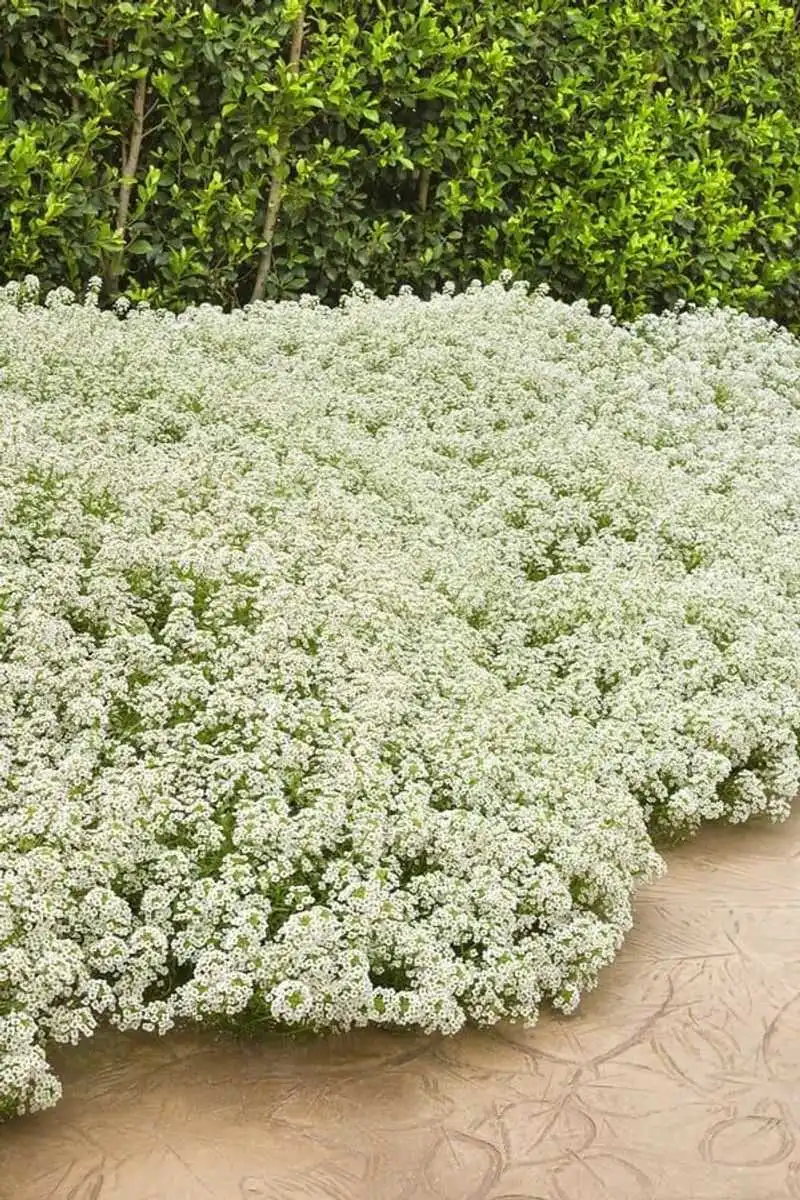
Alyssum is known for its sweet fragrance and delicate clusters of tiny flowers. These blooms range from white to purple and are perfect for edging pots or walkways.
Their honey-like scent attracts pollinators, making them a delightful addition to any garden. Alyssum thrives in cooler weather, offering long-lasting blooms in spring and fall.
Did you know? Alyssum is sometimes referred to as “sweet alyssum,” a nod to its lovely aroma and charming appearance.
Lobelia
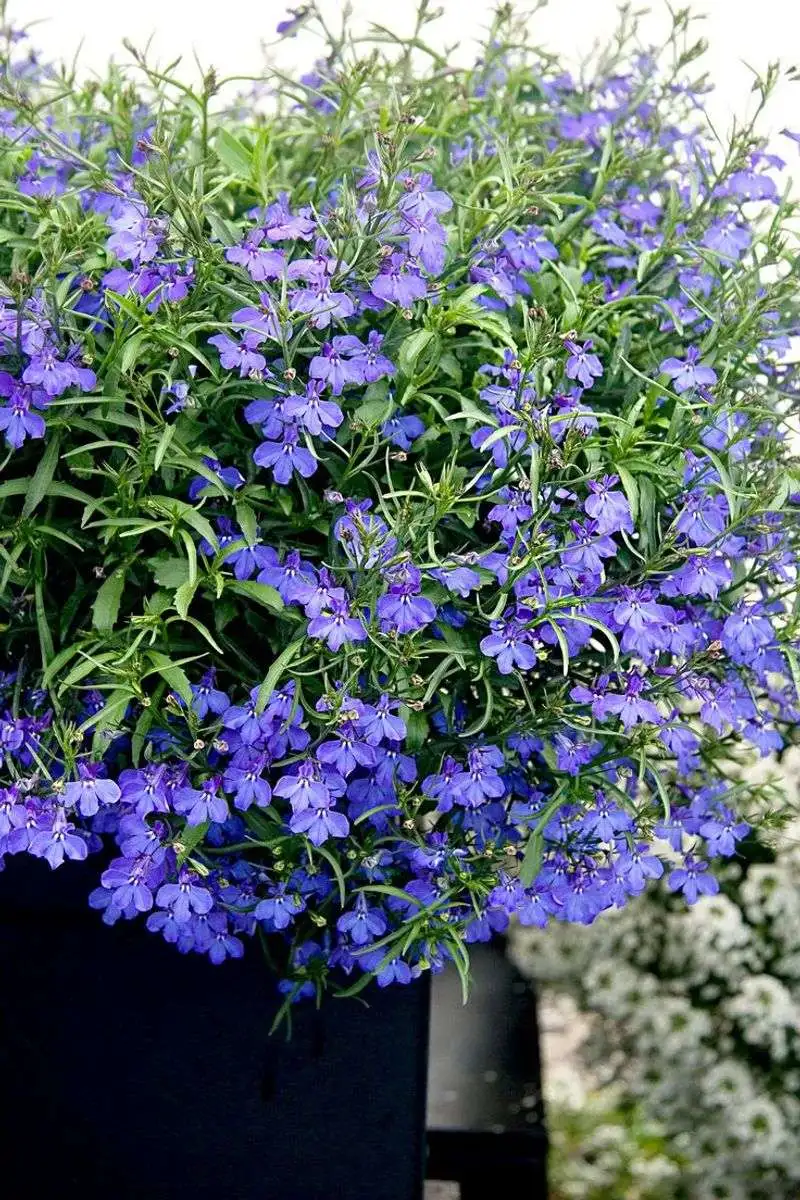
Lobelia offers a burst of intense blue, complemented by white and purple variations. These trailing plants are perfect for hanging baskets or container edges.
They thrive in cooler temperatures and require consistent moisture to flourish. Lobelias add a splash of color to shady spots, offering versatility in planting.
Fun fact: Lobelia is named after Matthias de Lobel, a Flemish botanist, and has been used traditionally in herbal medicine for respiratory health benefits.
Salvia
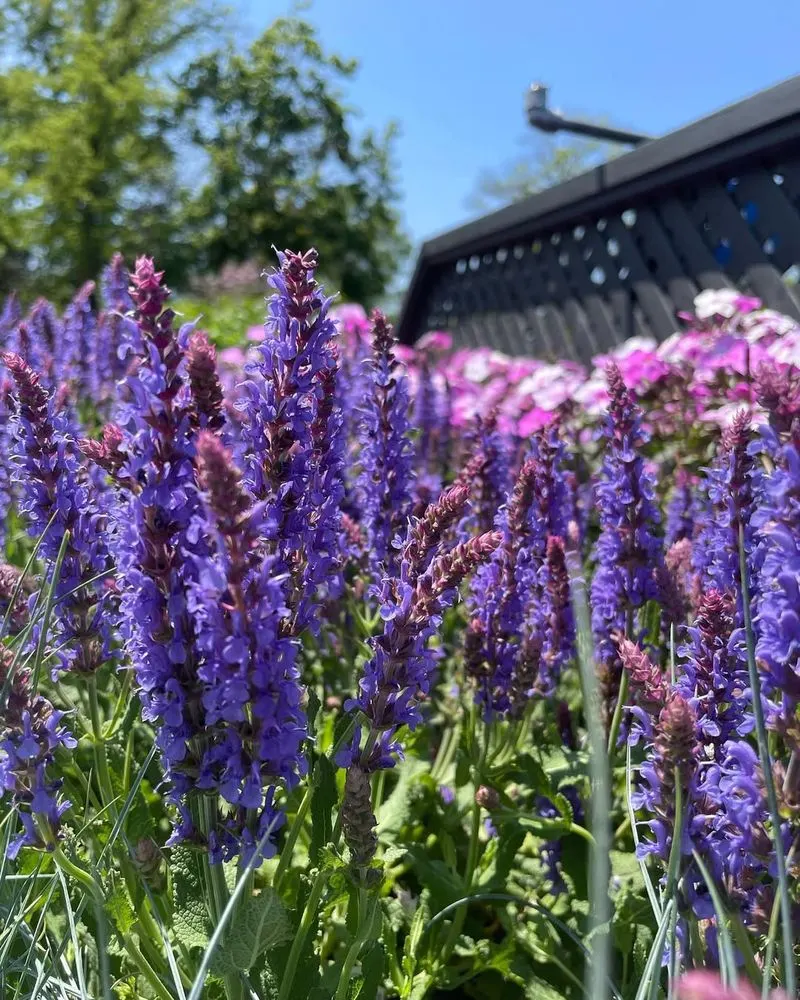
Salvia, known for its spiky blooms and aromatic foliage, comes in a range of colors from blues to fiery reds. These perennials thrive in sunny conditions.
Their vibrant spikes attract hummingbirds and bees, making them an excellent choice for eco-friendly gardening. Salvias are drought-tolerant, offering resilience alongside beauty.
Interestingly, Salvia is part of the mint family and has been used historically for its medicinal properties, adding both beauty and utility to gardens.
Sweet Pea
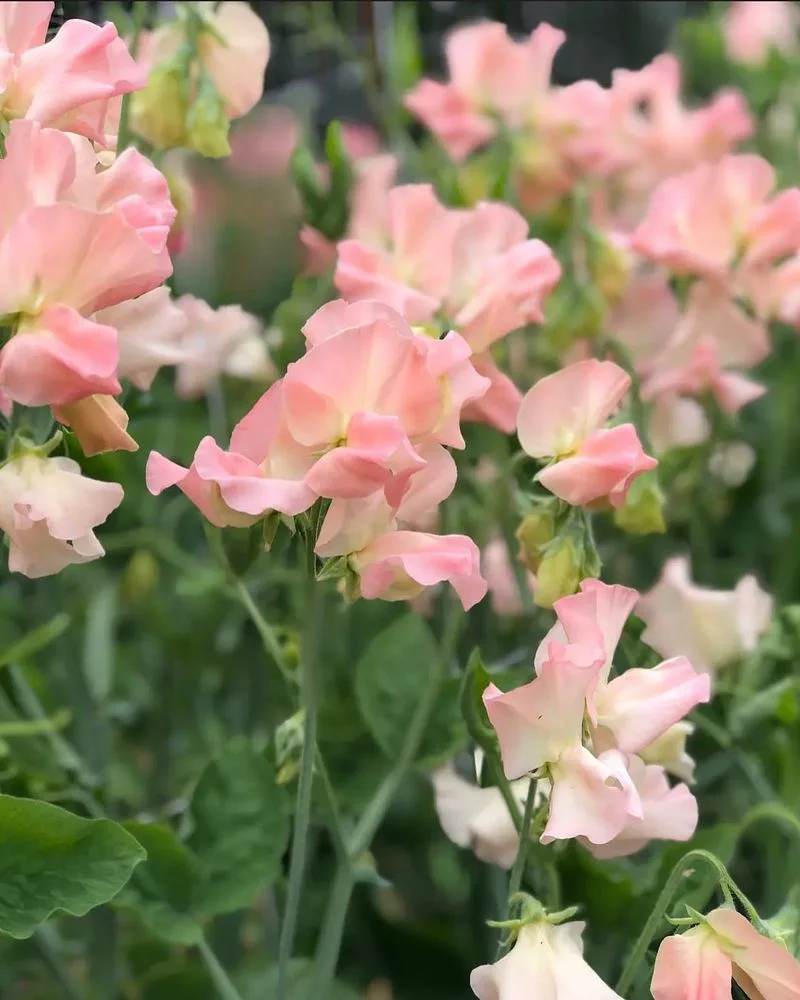
Sweet peas are celebrated for their enchanting fragrance and delicate blossoms. These climbing plants are perfect for adding height and scent to your garden pots.
They prefer cooler temperatures and require support to climb. Sweet peas’ stunning colors range from soft pastels to vibrant hues, offering plenty of variety.
Did you know? Sweet peas originated in Sicily and have been loved since the 17th century for their captivating scent and simple beauty.
Verbena
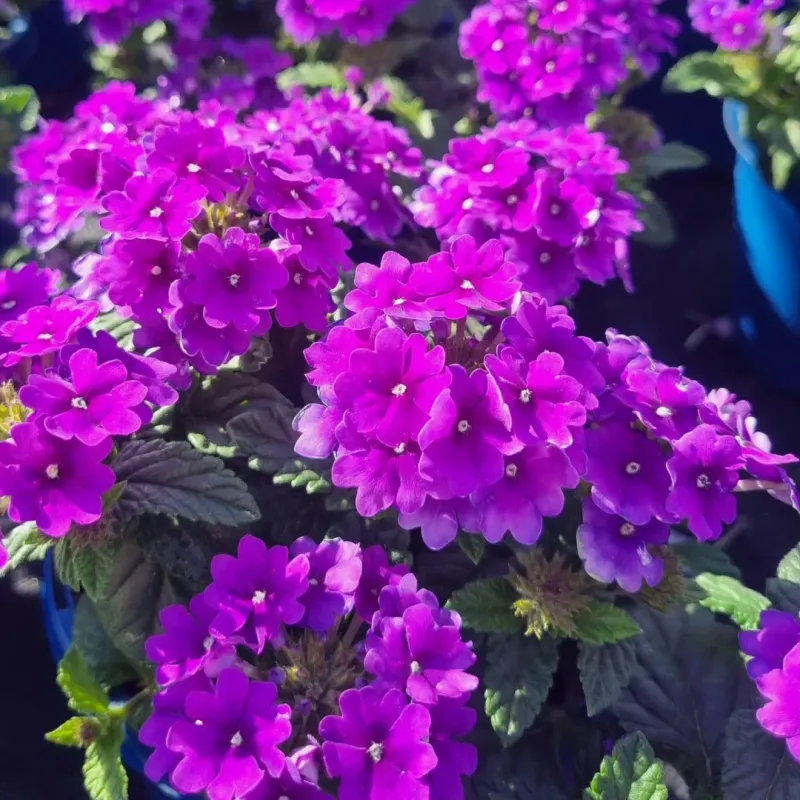
Verbena is a go-to choice for gardeners seeking non-stop blooms throughout the summer. These plants offer clusters of flowers in pink, purple, and white.
Verbena is drought-tolerant and thrives in full sun, perfect for sunny spots. Its long-lasting blooms attract butterflies, adding vibrancy to any garden setting.
Fun fact: Verbena is often associated with healing and protection in folklore, reflecting its enduring popularity in gardens around the world.
Coleus
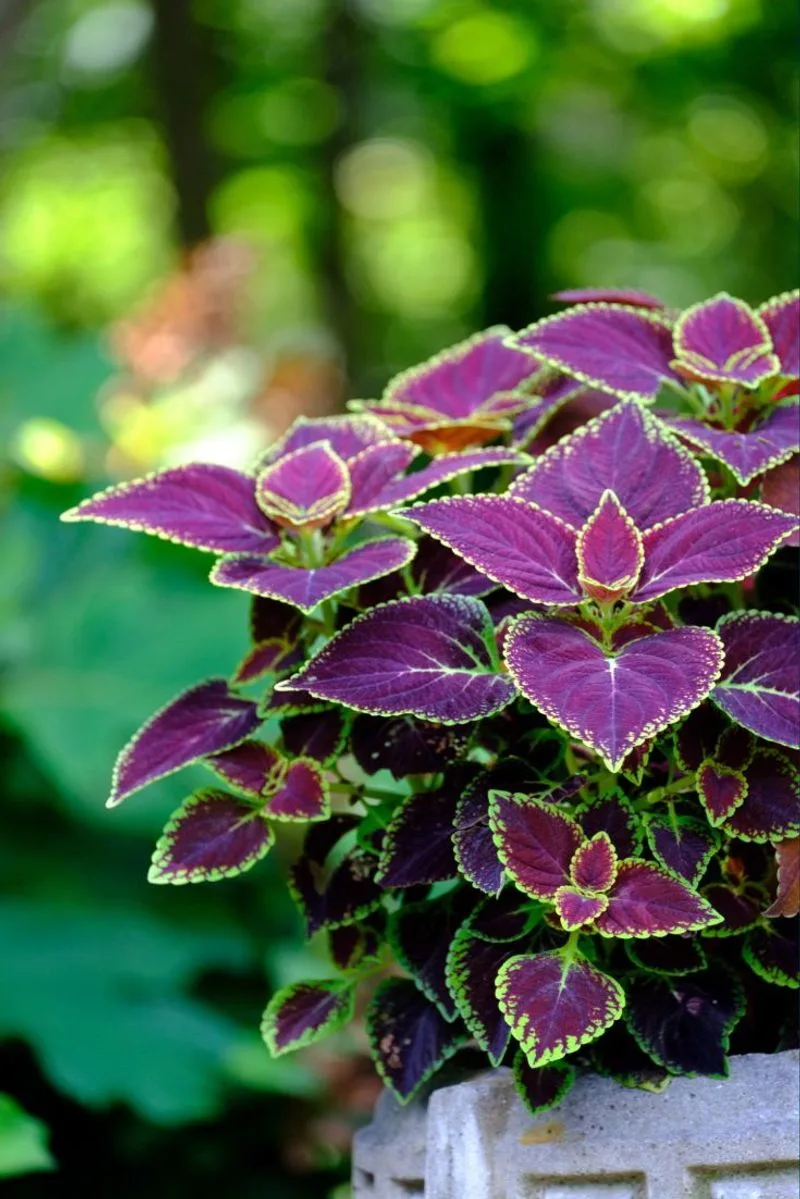
Coleus is renowned for its stunning foliage rather than flowers. The leaves come in a dazzling array of colors and patterns, making them a standout choice.
These shade-loving plants are perfect for adding visual interest to any corner of your garden. Coleus is easy to grow, requiring minimal care beyond regular watering.
Interestingly, coleus has been cultivated since Victorian times, when its vibrant leaves made it a favorite for ornamental gardens.
Dusty Miller

Dusty miller is appreciated for its silvery-gray foliage that provides a striking contrast to more colorful plants. Its lacy leaves add texture and elegance to pots.
This plant is drought-resistant and thrives in full sun, making it a low-maintenance option for summer gardens. Dusty miller is often used as a backdrop for brightly colored flowers.
Did you know? The plant’s name is inspired by its leaves’ appearance, which looks as if they have been dusted with a fine powder.
Heliotrope
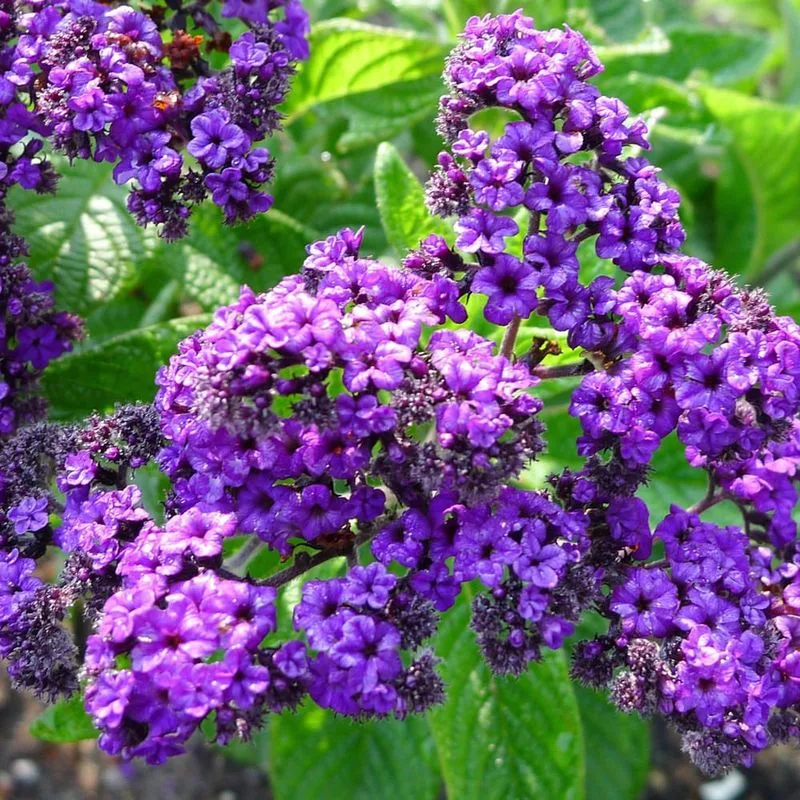
Heliotrope is cherished for its intensely fragrant blooms in shades of purple and white. These sun-loving plants are perfect for adding scent to your garden.
The clusters of flowers can attract butterflies, enhancing the ecological value of your garden. Heliotropes prefer well-drained soil and regular watering.
Interestingly, the plant’s name means “turning towards the sun,” reflecting its habit of following the sunlight during the day.
Bacopa
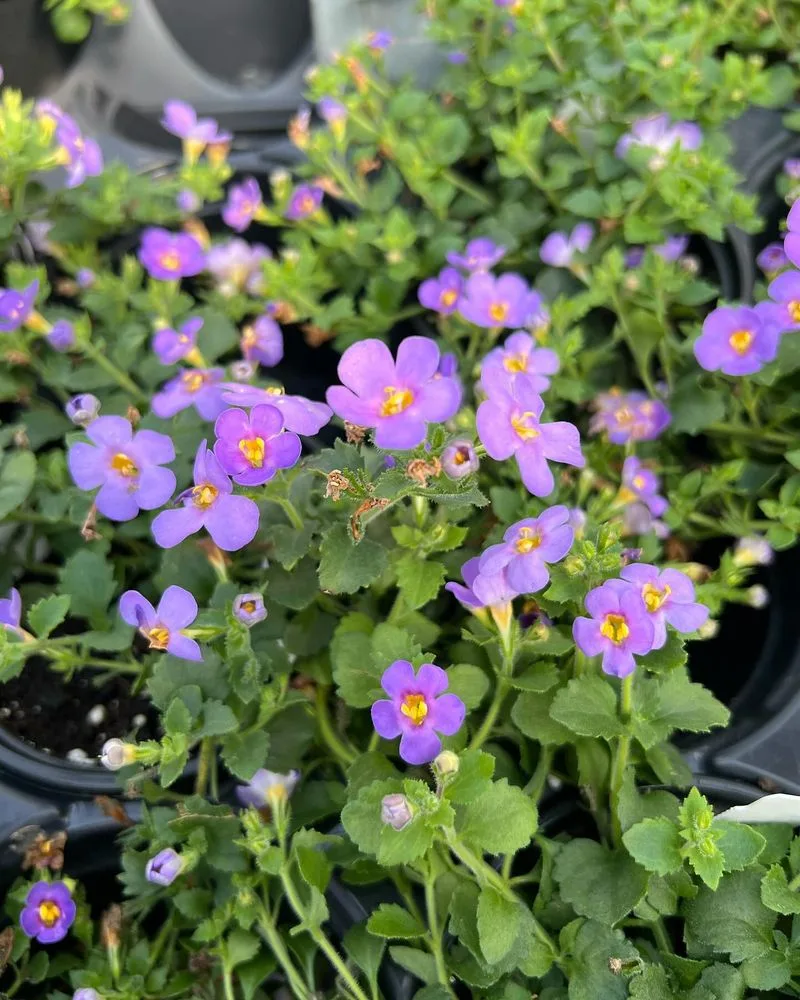
Bacopa is known for its cascading habit and tiny white flowers that bloom profusely throughout the summer. These plants are perfect for hanging baskets or as trailing elements in pots.
They thrive in full sun to partial shade and need regular watering to maintain their bloom. Bacopa’s simple beauty adds a touch of elegance to any container.
Fun fact: Bacopa is named after the Greek word for “small,” reflecting the petite size of its flowers and charming appearance.
Canna Lily
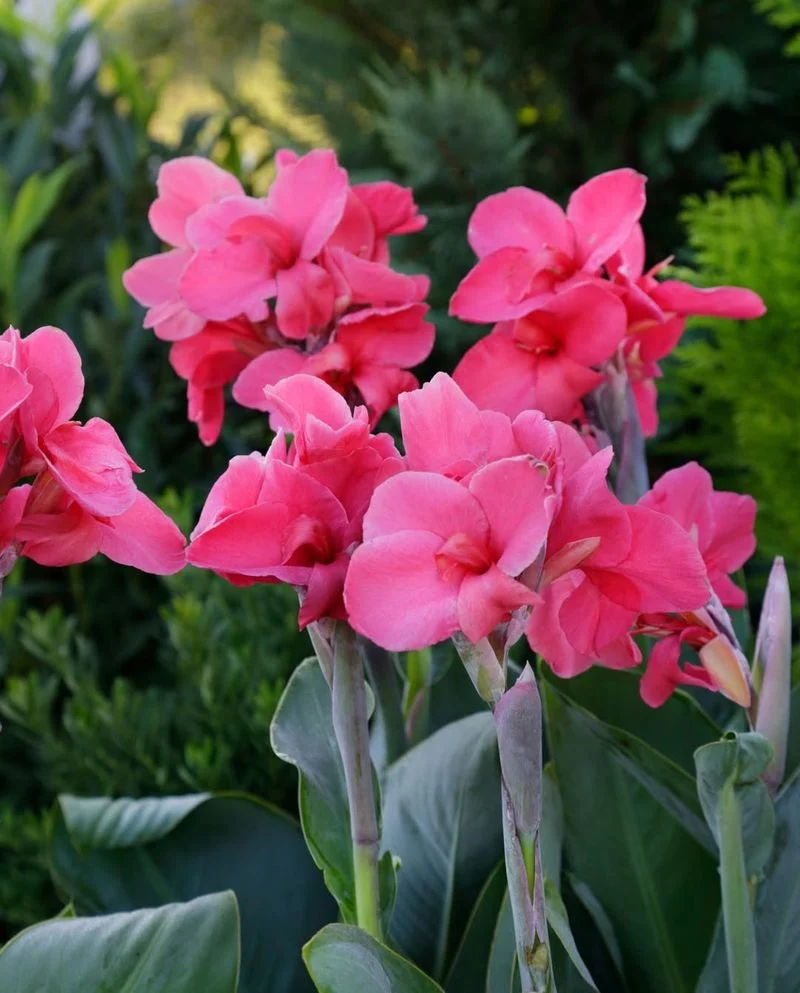
The Canna Lily, with its bold and striking foliage, brings an exotic touch to any garden. Its large, colorful petals resemble a tropical paradise, making it a favorite for summer pots. This plant thrives in full sun, needing plenty of warmth and light to show its true colors.
Not only is the Canna Lily visually appealing, but it also attracts hummingbirds and butterflies, adding life to your garden. Its tall stalks make it an excellent choice for the focal point in a pot, adding height and drama.
Did you know? The Canna Lily is not a true lily and originates from South America. Its resilience to heat and ability to flourish in a variety of soils make it an ideal plant for summer landscapes.

